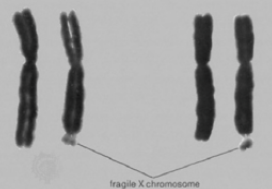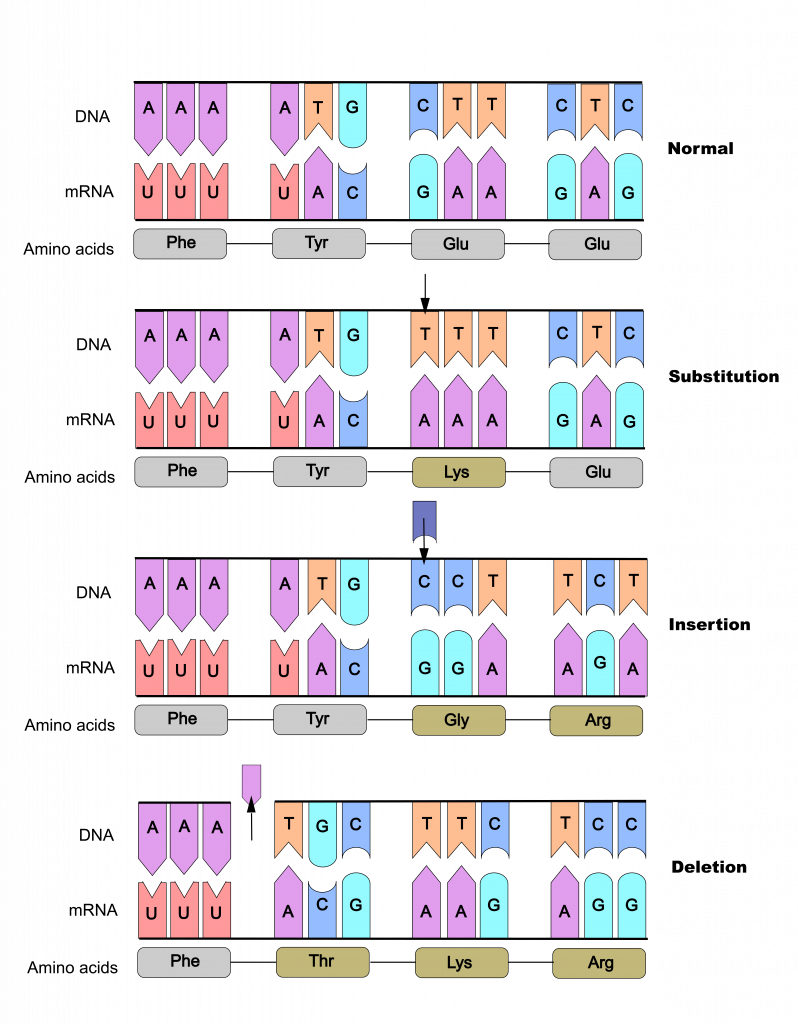5.10 Point Mutations Affect Gene Expression
Despite its fidelity, if DNA never incurred mistakes we would not have an evolutionary story to tell, and our world would not be characterized by such tremendous biodiversity. Mutations are mistakes that arise in DNA, either through random errors in DNA replication or through any one of a number of mutagenic agents—UV radiation, toxic compounds, etc. Mutations can affect whole chromosomes, large sections of chromosomes, or just a few nucleotides.
A type of mutation is the point mutation—a random change to one or a few DNA bases. These changes range from the “silent” mutation that has no effect, to mutations that alter amino acids without changing the fundamental nature of the protein, to mutations that render that gene nonfunctional,and may have detrimental effects at the organismal level.
Point mutations involve base substitutions, deletions, or insertions
A substitution mutation simply involves the replacement of one nucleotide for another. Substitutions may not change the amino acid sequence of a polypeptide. For example, a mutation in DNA that changes GAA to GAG will change the codon CUU to CUC; either way, the translated amino acid is leucine and the polypeptide is unaltered. Even some aminoacid changes can have little effect on the expressed protein. However, simple substitutions can have profound consequences. For example, a simple substitution of a single base in the gene for hemoglobin results in the allele for sickle-cell anemia, a potentially fatal blood disorder.
A deletion mutation is caused by the removal of one or more nucleotides. A deletion of three bases will typically only affect one or two amino acids, but a deletion of one or two bases disrupts all the codons “downstream” of the mutation and affects the entire remaining reading frame of the gene (a frameshift mutation).

Many examples of the genetic disease cystic fibrosis are due to deletion mutations. Also, a deletion of 32 bases in a gene coding for a T-cell receptor protein (CCR5) alters the ability of HIV viruses to penetrate host cells. Individuals with this mutation (CCR5-del32) have decreased susceptibility to HIV infection, conferring some protection against AIDS.
Insertion mutations result from the addition of one or more nucleotides. Like deletions, insertions can affect the entire reading frame of the gene, or they can simply add one or more amino acids to the translated polypeptide. However, a number of three-nucleotide (or “trinucleotide”) repeat diseases exist and include Huntingtons disease and fragile X syndrome. In fragile X syndrome, several CAG triplets are inserted into the X chromosome. Individuals who inherit this disorder (especially males) may have profound mental retardation.


